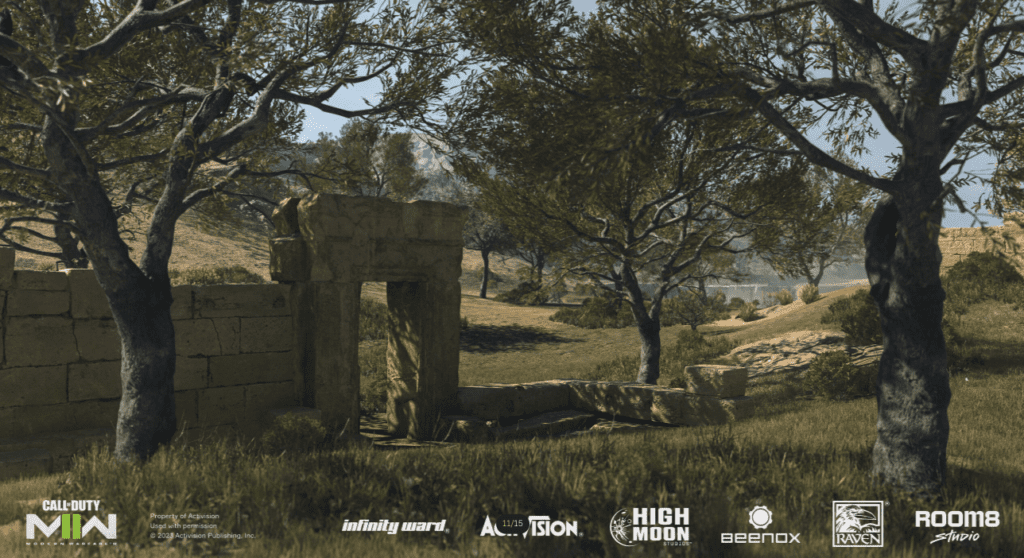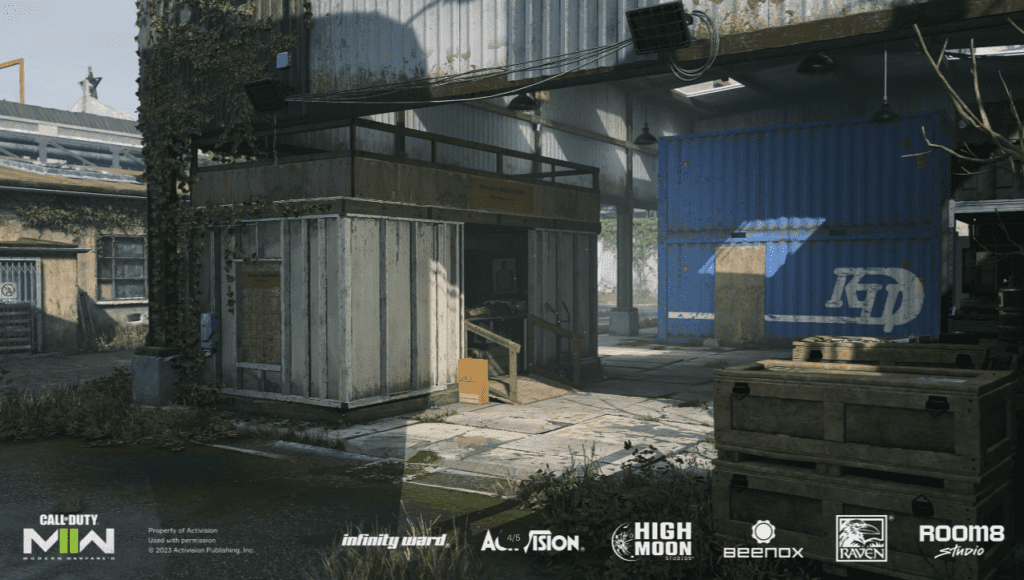The lasting impact of games such as TES V: Skyrim and Dark Souls is rooted in their captivating atmospheres rather than solely in their protagonists. This enduring appeal is attributed to the exceptional game worlds they present, leaving an indelible mark on players and prolonging the game’s relevance.
At Room8 Studio, constructing immersive game worlds is an art that requires mastery across diverse facets of game environment design. From intricate landscapes to atmospheric details, their expertise spans the creation of captivating game environments that resonate with players, ensuring an unforgettable gaming experience. This article delves into the core principles of 3D environment design in video games, highlighting the invaluable support that specialized professionals, such as those found at https://room8studio.com/services/3d-environment/, can offer to developers in this crucial field.
What Is 3D Environment Design?
In our field, 3D environment design involves the art and science of constructing interactive and immersive worlds that serve as the backdrop for gaming experiences. It encompasses the creation of digital landscapes, interiors, and exteriors that captivate players while seamlessly intertwining with the game’s narrative and mechanics. This holistic process amalgamates artistic vision, technical proficiency, and an understanding of player psychology.
The essence of 3D environment design lies in guiding players through a game’s world, emotions, and narrative. Elevating immersion, emotional engagement, and gameplay integration can transform a good game into an exceptional one. When executed skillfully, environment design metamorphoses games into remarkable experiences, leaving players eagerly anticipating their next venture into virtual realms. This multidimensional discipline merges artistic creativity with technical expertise to fabricate immersive, visually compelling, and interactive game environments.
Who Are 3D Environment Artists?
To achieve proper 3D environment design for your game, the essential professionals are 3D environment artists. They serve as the architects and engineers behind your game’s world, being visionary artists capable of bringing virtual landscapes and settings to life.
If you’re considering incorporating 3D environment artists into your project, here’s a rundown of the skills worth examining:
- 3D Modeling and Sculpting: Proficiency in tools like Blender, Maya, or ZBrush is fundamental. Artists excel at creating detailed and realistic objects and terrains, both organic and hard-surfaced.
- Texture and Material Creation: Creating high-quality textures and materials is crucial for visual appeal. Artists understand Physically Based Rendering (PBR) workflows to create materials that respond realistically to light.
- Lighting and Shading: Mastery in creating lighting setups and familiarity with shader systems are imperative for enhanced visual experiences.
- Environmental Storytelling: Proficient artists can convey history, mood, and narrative through environmental design, collaborating closely with game designers.
- Optimization and Performance: Creating visually stunning environments that run smoothly on various platforms demands a balance between visual fidelity and performance considerations.
- Game Engines Knowledge: Proficiency in game engines like Unity or Unreal Engine is necessary to integrate assets, work with level editors, and troubleshoot technical issues.
- Collaboration and Communication: Effective communication and adaptability to feedback are vital when collaborating with team members like level designers and concept artists.
- Staying Updated: In a rapidly evolving industry, continuous learning and staying abreast of the latest tools, techniques, and trends are essential.
Room8 Studio Redefines Gaming Realism with Spectacular 3D Environments
Room8 Studio stands as a frontrunner in the video game industry, heralded for its mastery in crafting awe-inspiring 3D environments that transcend the boundaries of gaming. With an arsenal of cutting-edge tools and a team of talented artists, Room8 Studio excels in creating immersive and lifelike virtual worlds. Their meticulous attention to detail breathes life into every pixel, seamlessly blending artistry and technology to transport players into breathtaking landscapes and intricately designed settings. As a cornerstone in the creation of 3D environments for the video game industry, Room8 Studio continues to push the boundaries, setting new standards for realism and immersion in gaming experiences.

Types of 3D Environments
3D environments take diverse forms, each contributing uniquely to a player’s experience. These environments serve as the canvas upon which the game’s narrative unfolds, significantly influencing gameplay, mood, and immersion. Here are common types of 3D environments in games:
- Natural Landscapes: Lush forests, serene meadows, or rugged mountains offer challenges like navigating rough terrain or encountering wildlife.
- Urban Environments: Sprawling cities and villages provide diverse opportunities for interaction, exploration, and dynamic encounters with NPCs.
- Interior Spaces: Ranging from haunted houses to futuristic stations, these spaces often drive the game’s story and introduce various challenges.
- Fantasy Realms: Enchanting forests or mystical temples allow for creative storytelling and epic battles with mythical creatures.
- Post-Apocalyptic and Dystopian Worlds: Bleak, ruined landscapes underscore survival and decision-making, setting somber moods.
- Sci-Fi Settings: Futuristic environments with high-tech gadgets and alien worlds challenge players with futuristic mechanics and technology.
- Creating 3D Environment Art: The Process
- Developing captivating 3D environment art involves multiple stages, requiring a fusion of artistic vision, technical proficiency, and a deep understanding of narrative and mechanics. Key stages in creating 3D environment art include:
Conceptualization and Design:
- Reference Gathering: Artists collect real-world references to inform and authenticate their designs.
- Concept Art: Initial sketches lay the foundation for visualizing the environment’s look, feel, and key elements.
Blockout and Layout:
- Blockout: Creating a simplified version of the 3D environment establishes scale, layout, and gameplay considerations.
- Layout Planning: Determining asset placement, landmarks, and points of interest while considering player flow and level design.
3D Environment Modeling:
Low-Poly Modeling: Simplifying high-poly models for real-time rendering while maintaining visual fidelity.
High-Poly Modeling: Creating detailed 3D models of assets aiming for realism and detail.
UV Mapping and Texturing:
- UV Mapping: Unwrapping 3D models to apply textures accurately, crucial for texture quality.
- Texturing: Applying textures to 3D models for life and detail in the environment.
Material Creation:
- Shader Development: Crafting shaders that define how materials react to lighting for realistic visuals.
Lighting and Atmosphere:
- Lighting Setup: Designing the lighting environment and its interaction with materials for realistic scenes.
- Atmosphere and Effects: Implementing environmental effects to enhance mood and atmosphere.
Testing and Iteration:
- Testing in-game engines and iterations to address issues and enhance quality.
Finalization:
- Ensuring all assets are properly placed, optimized, and integrated into the game.
Creating 3D environment art involves collaborative efforts with team members like level designers, writers, and animators to ensure a cohesive and engaging gaming experience.

Software for 3D Environment Design
Creating 3D environment art demands specialized software tools catering to different design aspects. Essential software tools used by environment artists include:
Blender:
Versatile for 3D modeling and sculpting a wide range of assets.
Autodesk Maya:
Valuable for rigging and animating environmental assets.
ZBrush:
Ideal for high-poly modeling and sculpting intricate assets.
Unity and Unreal Engine:
Widely used game engines for scene setup, asset integration, and environment creation.
Autodesk 3ds Max:
Powerful for architectural modeling and creating complex objects or structures.
Substance Designer and Painter: For procedural texture creation and precise texturing of game assets.
World Machine:
Specialized in generating realistic terrains.
Houdini:
Renowned for procedural capabilities in generating complex and dynamic environments.
SpeedTree:
Used for creating realistic trees and vegetation.
Photoshop:
Indispensable for texture editing and compositing.
Marmoset Toolbag:
Utilized for real-time rendering and presenting 3D environments.
Environment artists often employ a combination of these tools, adapting to project requirements and personal preferences to create visually attractive and seamlessly integrated gaming environments.
Challenges in Designing 3D Environments
Designing 3D environments for games presents various challenges:
- Performance Optimization: Balancing visual quality with performance on diverse platforms.
- Consistency: Maintaining visual coherence across the game world despite multiple artists working on different assets.
- Asset Creation: Managing time to create detailed models and textures within project deadlines.
- Realism vs. Artistry: Striking a balance between realism and artistic expression aligning with the game’s vision.
- Scale and Proportion: Crafting spaces that evoke desired feelings while aligning with the game’s narrative.
- Storytelling Through Design: Conveying meaning and narrative subtly without overwhelming players.
- Technical Constraints: Keeping pace with evolving software, hardware, and rendering technologies.
- Interactivity: Designing environments that respond to player actions and fit within the game’s mechanics.
- User Interface Integration: Ensuring seamless integration of the environment with the game’s UI.
- Environmental Effects: Implementing dynamic effects without compromising performance.
- Narrative Alignment: Maintaining consistency with the game’s narrative and world-building.
- Cross-Platform Compatibility: Creating environments that perform well across different platforms.
In summary, addressing the challenges in 3D environment design necessitates a blend of artistic flair, technical expertise, and adaptability. Proficient environment artists adeptly tackle these obstacles, resulting in visually stunning game worlds that profoundly impact players. Feel free to reach out if you require assistance with 3D environment art for your game.
